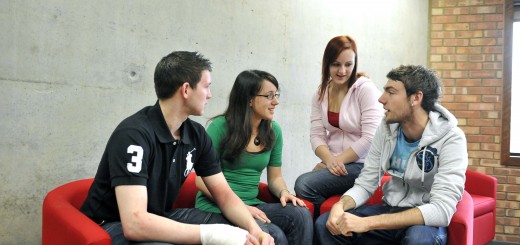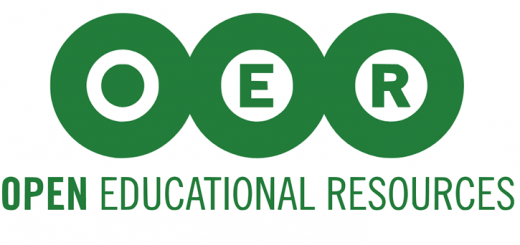EdTech fallacies, Kevin Costner and ALT-C
Anybody that was following the #altc hashtag a couple of weeks ago may have noticed some strange tweets from me and others talking about Field of Dreams, Kevin Costner and random connections to learning technology. I was fortunate enough to be able to attend the Association for Learning Technology Conference earlier this month and ran a workshop with Kerry Pinny from University of Warwick and Marcus Elliott (who, unfortunately, couldn’t be there in person but appeared on video in the session). The session was called: ‘Kevin Costner is a liar: Field of Dreams and other EdTech fallacies’ and looked at a number of fallacies that we’re often guilty of propagating in the TEL/Learning Technology field.
Disclaimer: The session was designed to be deliberately provocative and we wanted to put forward some arguments from prominent voices in ed tech such as Neil Selwyn, Sian Bayne, Audrey Watters, Donna Lanclos and Dave White. We realise that there is a lot more nuance to the debates that we brought up, but we wanted to force people to think and discuss things – even if they fundamentally disagreed with us.
The Five Fallacies
1. If you build it, HE will come
The memorable quote from the film, Field of Dreams, is often mis-quoted as: “If you build it, they will come.” The actual quote is: “If you build it, he will come” but for the purposes of our somewhat tenuous link between Field of Dreams and talking about learning technology in Higher Education, we changed the quote to: “If you build it, HE will come.” There is often a mistaken idea within education that if we install a certain system, people will immediately start using it. More about Fallacy 1 is explained in Marcus’ video below.
At last year’s ALT-C, Donna Lanclos and Dave White’s keynote spoke about how we need to do more than just see technology as a way of speeding up admin. They posited that you need to put in a lot of work with tech for the top end of Beetham and Sharpe’s Digital Literacy pyramid (2010), but it is at the top of the pyramid that the ‘best’ and deepest ‘transformations’ through learning occur.
It’s safe to say a Learning Technologist’s work mainly focusses on the ‘I can’ and the ‘I have’ – the bottom part of the pyramid. This is not to say that this is not essential and important work, but do we often package this work in the language of ‘transformation’ or ‘innovation’, when it is neither transformative or innovative? From personal experience in different institutions, as learning technologists I know we are sometimes guilty of selling the cult-like belief that technology will transform students’ learning. Are we doing our students and staff a disservice by starting off thinking about the tech first, not the people?
2. Technology will solve everything
The second fallacy we proposed was that there are often many assumptions within education that the application of technology will fix problems within an institution or within the sector more generally. As Neil Selwyn suggests, there is a “hope that new technologies will solve deep-rooted problems and limitations of education ‘better than previous efforts’.” The reality is that technology can’t do anything without people, and when we go to technology to be the solution we are often left disappointed. As Sian Bayne argues in her well-know paper on “What’s the matter with technology-enhanced learning”:
“We need to ask not only what technologies can do, but where they fail in relation to our expectations of education.”
3. We don’t need evidence
Fallacies 3 and 4 came from a reaction to a discussion on the ALT Members mailing list earlier this year, which started from someone asking a question about what research (if any) people share with academics in their institution when they get asked about evidence for a particular approach. What followed this mailing list discussion was a blog post from James Clay, suggesting that:
When an academic asks “for the evidence to show technology can make a difference” the problem is not the lack of evidence, but one of resistance to change, fear, culture, rhetoric and motivation.
We wanted to highlight that this is a dangerous assumption to make and could be seen as an attempt to position the use of technology in teaching as a somewhat ‘superior’ practice than those who are not using tech. Which led on to Fallacy 4…
4. ‘They’ don’t get it
Along with Fallacy 3, this particular attitude can often result in an ‘us’ and ‘them’ situation, with learning technologists instantly being on the defensive and taking it personally when academics don’t engage with us. Matt Cornock from STEM Learning Centre wrote an excellent blog post called ‘Don’t be an authority on meta-meta-learning’ which we drew upon for this particular fallacy. Rather than dismiss a lack of engagement by making assumptions about whether people understand something, it is our responsibility to listen and try to understand. It is teaching staff who know their students best, know what works and what doesn’t, and it is our job to work in partnership with them to achieve the learning outcomes they would like.
5. They’re not interested
Inspiration from this final fallacy came from Sue Watling’s post on ‘The invisible tribes and territories of the TEL-People’. We wanted to bring up the sense of disconnect that seems to have happened in a lot of institutions between teaching staff and those working in TEL Teams or another aptly-named equivalent. Have we made ourselves invisible?
TEL-People inhabit sequestered spaces, frequently separated from the Units, Centres and Libraries which house us. Located at the far end of a corridor behind a swipe card or on the periphery of the campus where no one bothers to tread.
Is limited innovation, impact and staff engagement our fault?
After outlining the five provocations/fallacies, we asked the question above to form the basis of discussion for the remainder of the workshop.
Participants were asked to discuss this on their tables and show us the ‘Happy Costner’ or ‘Sad Costner’ faces that we’d provided, depending on their viewpoint. We also asked participants to tweet us their ‘Yes’ or ‘No’ answer using the hashtags #ALTC and #Costner, and using the Padlet we set up for the session. As expected, there were no simple ‘yes’ or ‘no’ answers and there were some excellent points raised from the room. I particularly liked the point one table made about how we are all guilty of making assumptions and blaming others for perceived ‘failings’ on our part, and that all staff in an institution have a responsibility to counter that, whatever our role. There were some fantastic tweets that came out of the session and Kevin Costner ended up having a mini tour of Liverpool at the hands of two enthusiastic participants later that evening! Check the Storify of tweets linked below to find out more.
We were not expecting any concrete answers or conclusions from our session and wanted it to serve as a springboard for further discussion and debate. I think we were successful in that! I want to extend my thanks to Kerry and Marcus, who asked me to step in and contribute when Marcus could no longer attend ALT-C, and also to all the organisers of ALT-C 2017. It was a great conference (Liverpool is one of my favourite cities) and I got chance to catch up with former colleagues and chat with some very interesting people from all over the world.
Session resources
Storify
- Slides [PDF] – includes references to all blog posts and articles we took inspiration from
- Kevin Costner is a liar Padlet



